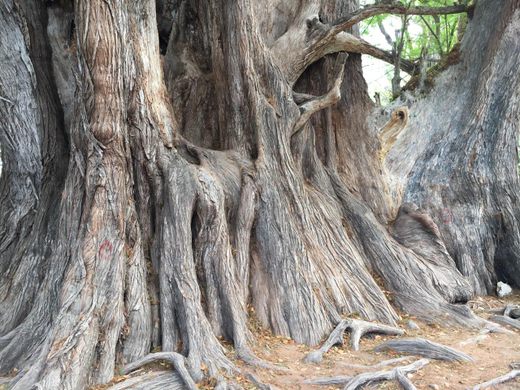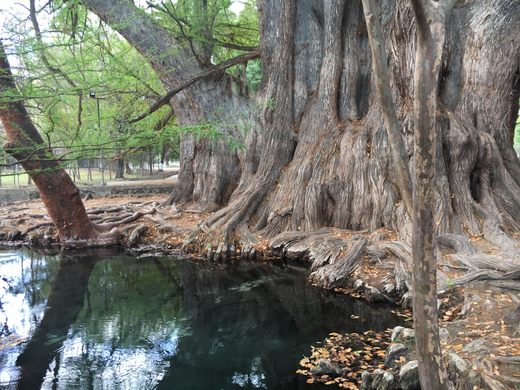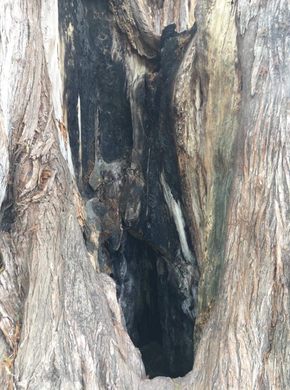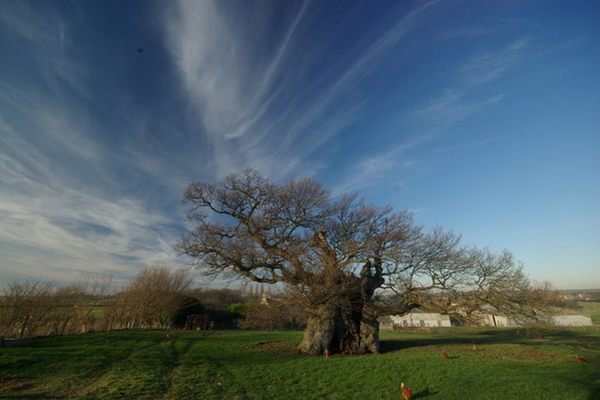El Árbol Milenario
A fairytale-like grove with a crystal-clear spring bubbling under the shade of a massive ancient tree.
The taxodium mucronatum tree—known variously as the sabino, the Montezuma cypress, and the ahuehuete (from the Náhuatl language, meaning “old man of the water”)—has been Mexico’s national tree since 1910, the centennial of Mexican independence, thanks to the singular role some specimens have played in the country’s history and image.
The tree under which Spanish conquistador Hernán Cortés is said to have wept after his first defeat against the Aztecs (and its saplings) is a sabino. Mexico’s largest tree by trunk thickness, El Tule in Oaxaca, is also a sabino. And unsurprisingly, the second-thickest tree in the country, the roughly 1,000-year-old Árbol Milenario (Millennium Tree), is a sabino as well.
With a trunk diameter of 72 feet, it’s likely that the Millennium Tree, located in the small town of Concá in the mountains of Querétaro, is among the thickest in the world. And what the Concá tree might lack in size when compared to its distant Oaxacan cousin, it makes up for in setting. Surrounded by soccer fields and small patches of forest of the town’s sports complex, this enormous sabino sits in a small grove with crystal-clear spring water bubbling up from the soil under its roots.
While many ancient trees can only be appreciated from behind the fence that surrounds it, the fencing around the Concá tree is usually unlocked, meaning you can swim in the clear waters of its springs and sit under the shade of this ancient giant. In this natural oasis, it is easy to believe you have crossed a portal into a land of fantasy and magic, with little to bring you back to reality other than the shouts of kids playing soccer nearby.
Know Before You Go
As of February 2019, the tree and springs could still be accessed but local authorities provide several suggestions to maintain the health of the tree and surrounding ecosystem.
Things to avoid are: using non-biodegradable suncream or other skin products if going in the spring, climbing into the tree trunk's hollows, stepping directly on the tree's exposed roots, and removing any part of the tree including bark, twigs, and leaves.
Camping in the grounds of the sports complex is common and no special permit is usually required other than informing the available staff.
Plan Your Trip
The Atlas Obscura Podcast is Back!



















Follow us on Twitter to get the latest on the world's hidden wonders.
Like us on Facebook to get the latest on the world's hidden wonders.
Follow us on Twitter Like us on Facebook